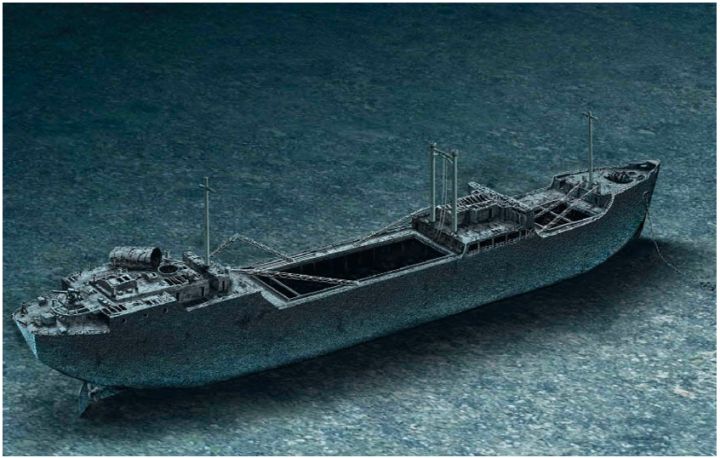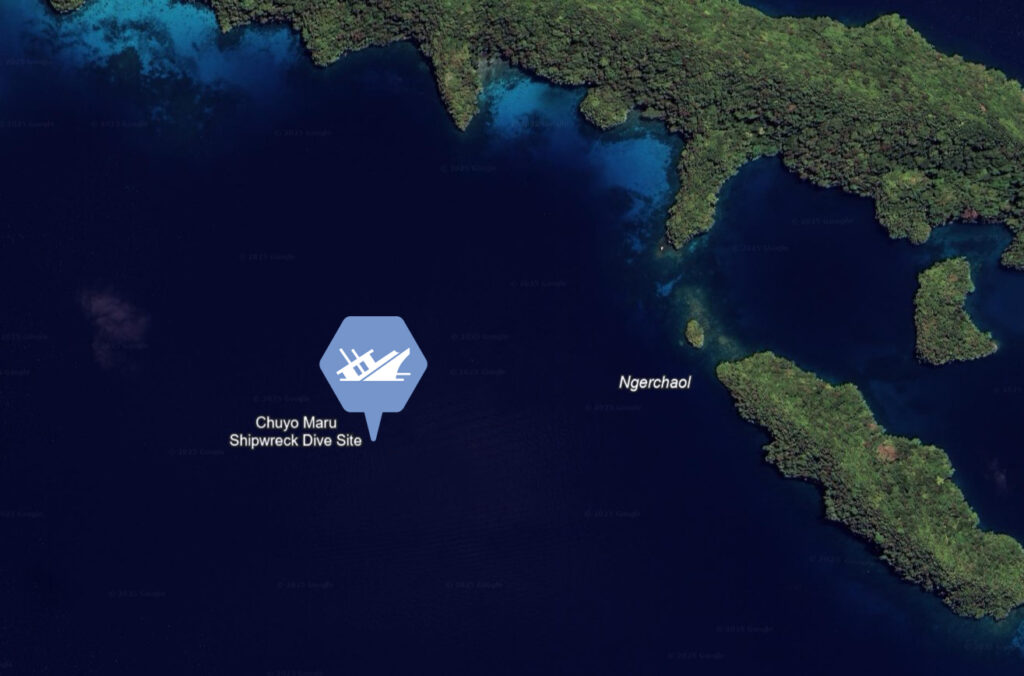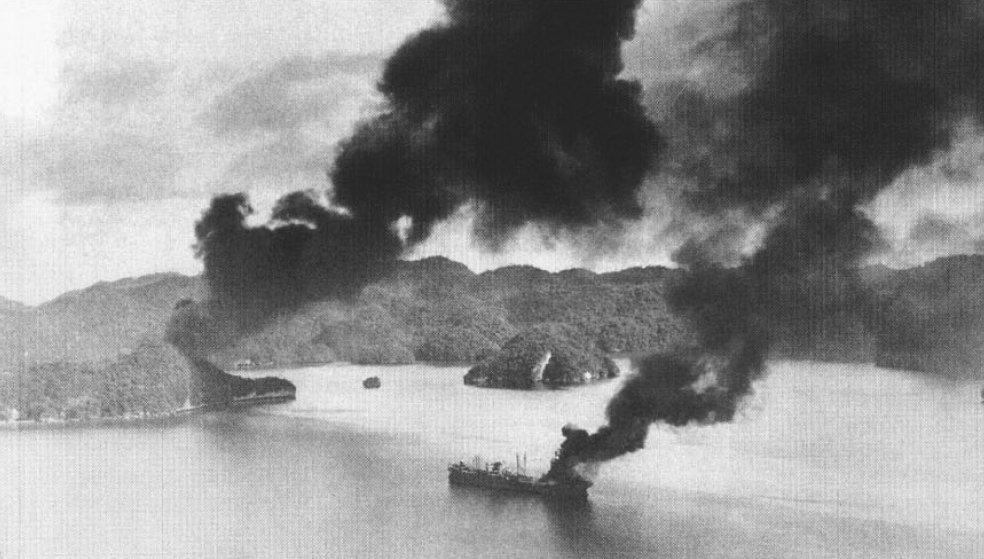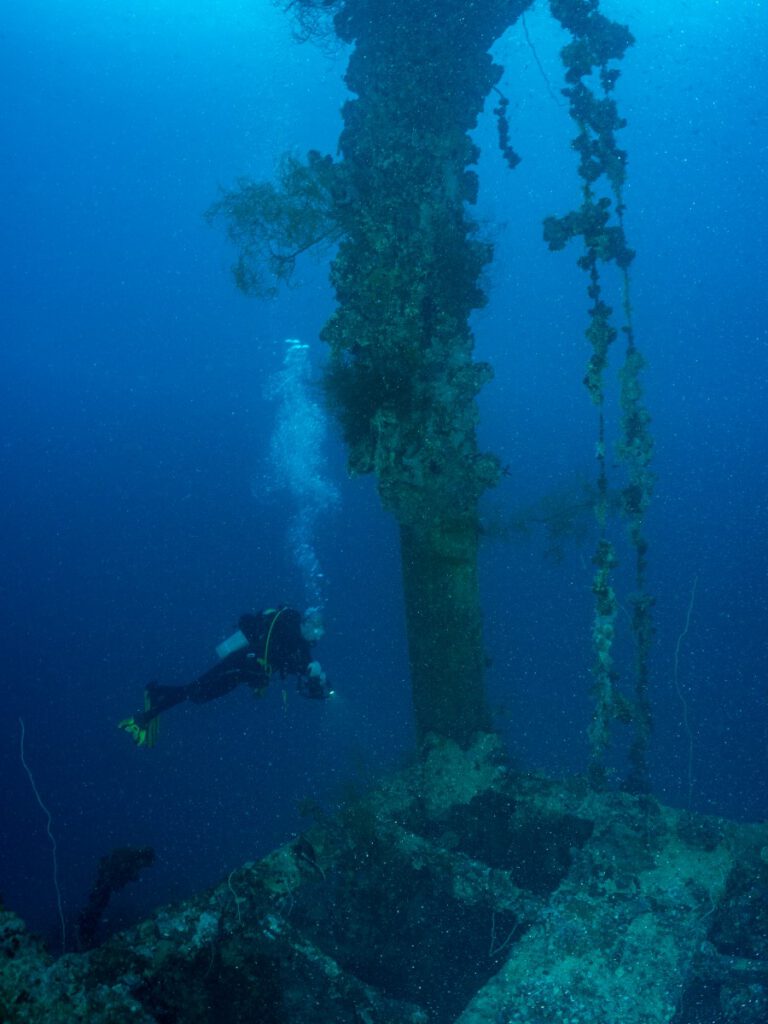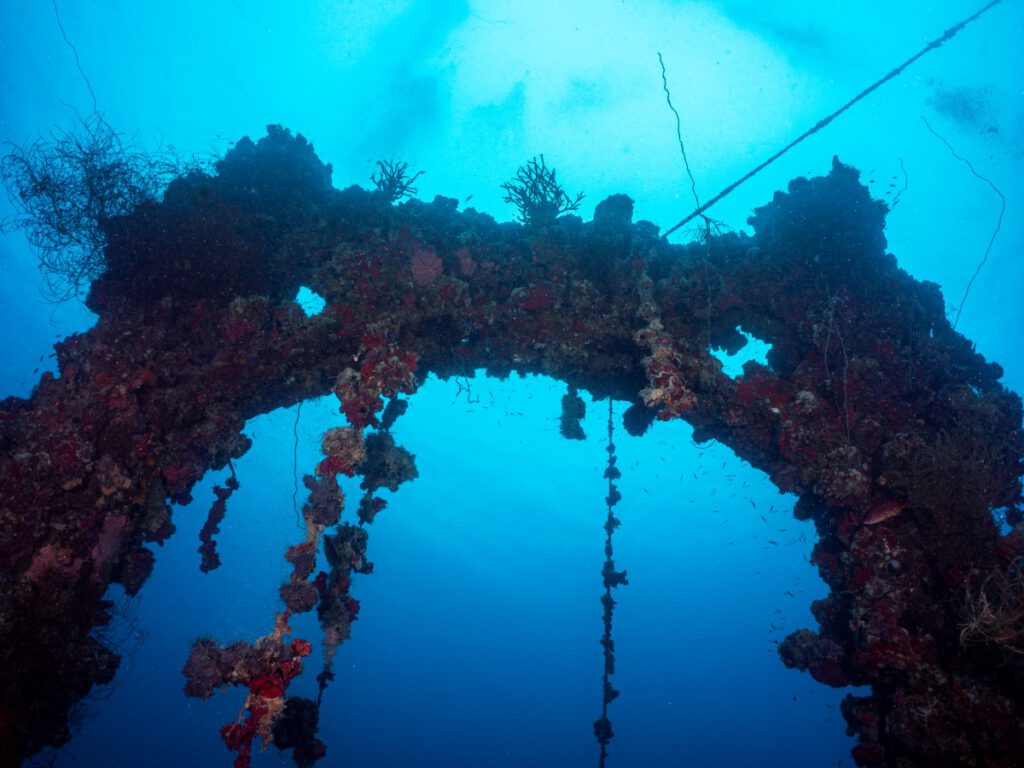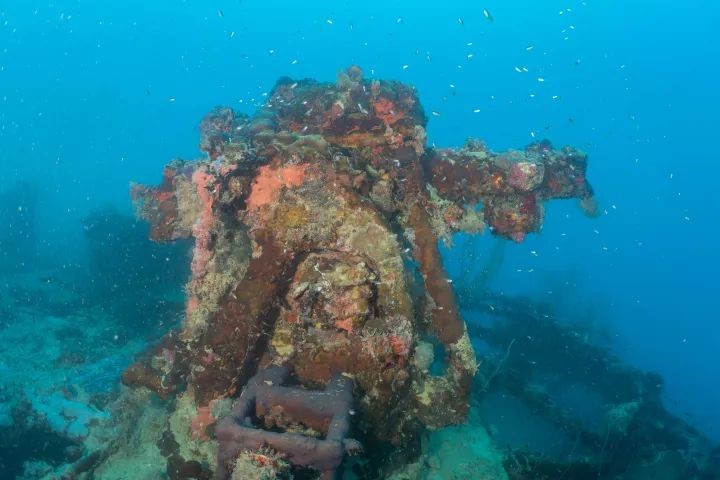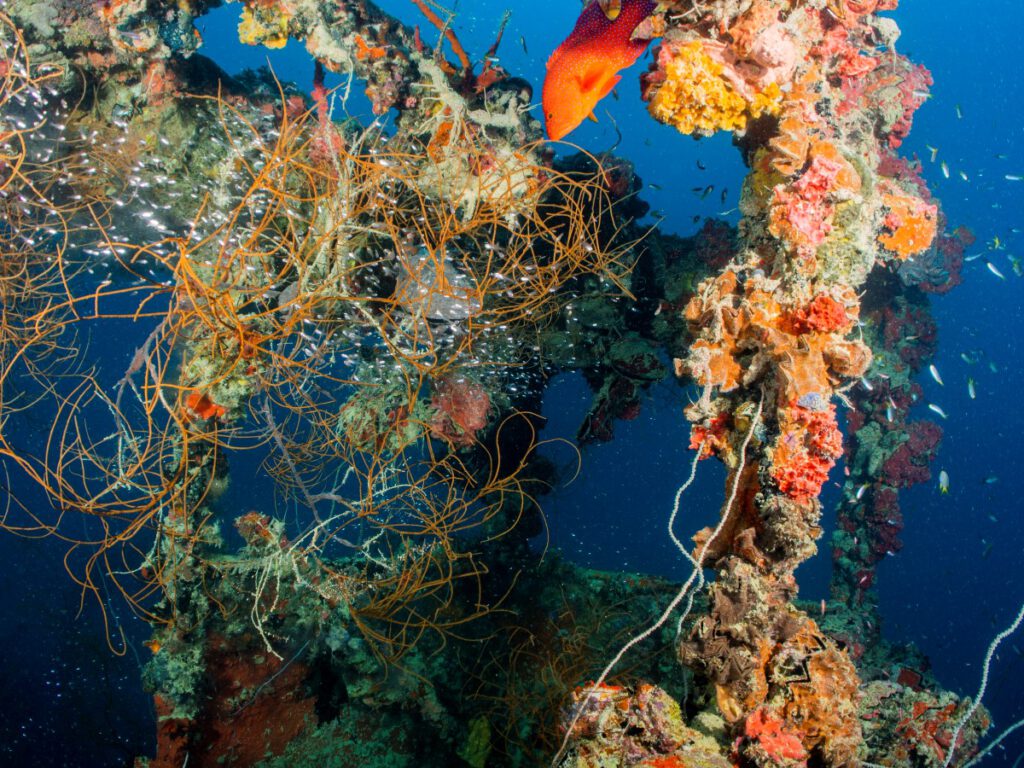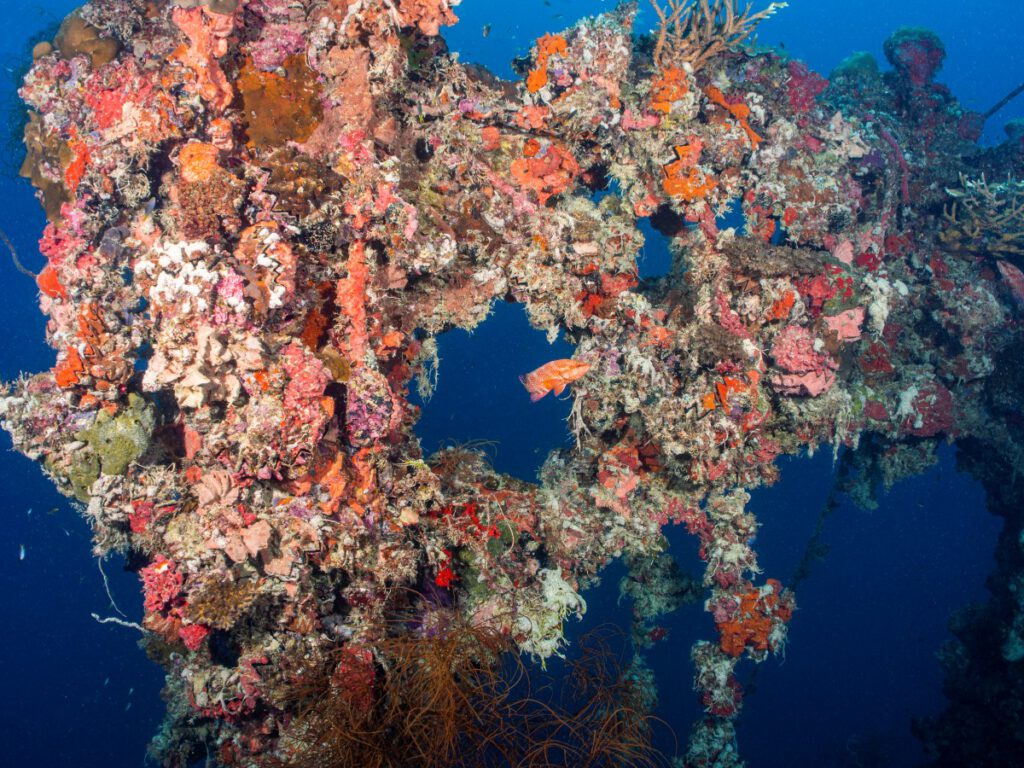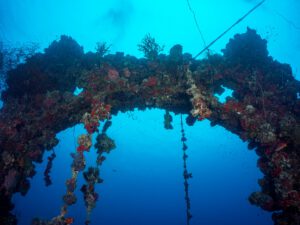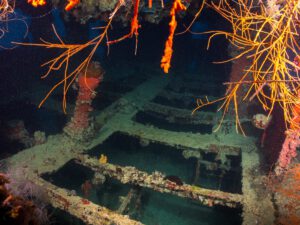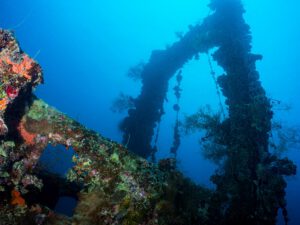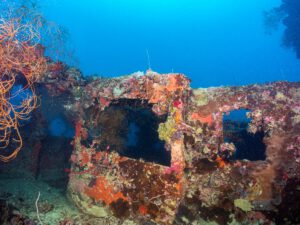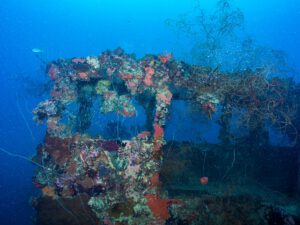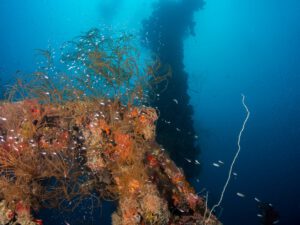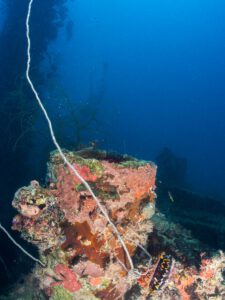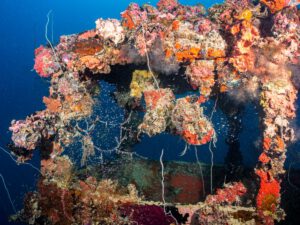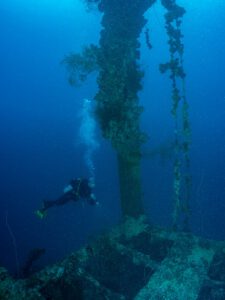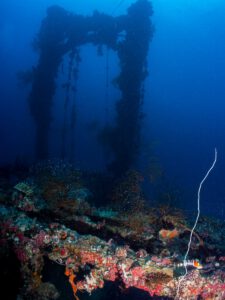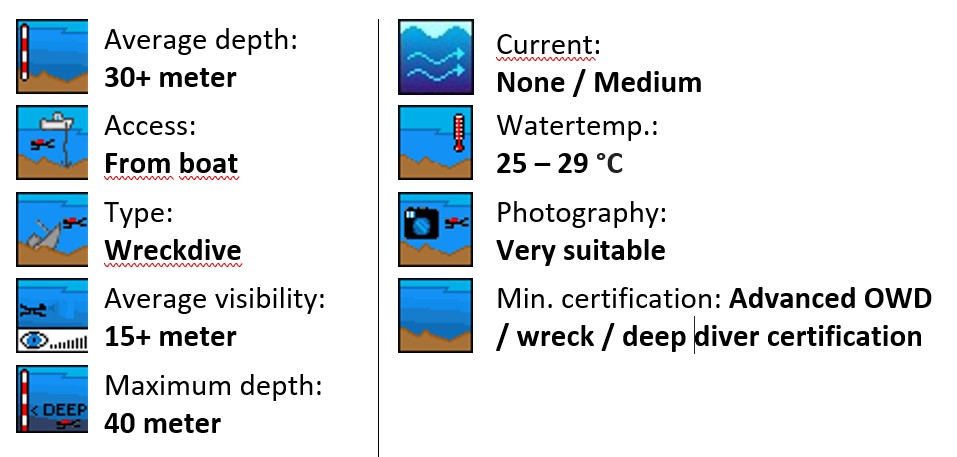Chuyo Maru - Palau - Micronesia
The Chuyo Maru, one of the most popular wrecks in Palau!
This medium-sized coastal freighter was bombed during Operation DESCECRATE ONE on March 30, and she sank on April 1, 1944.
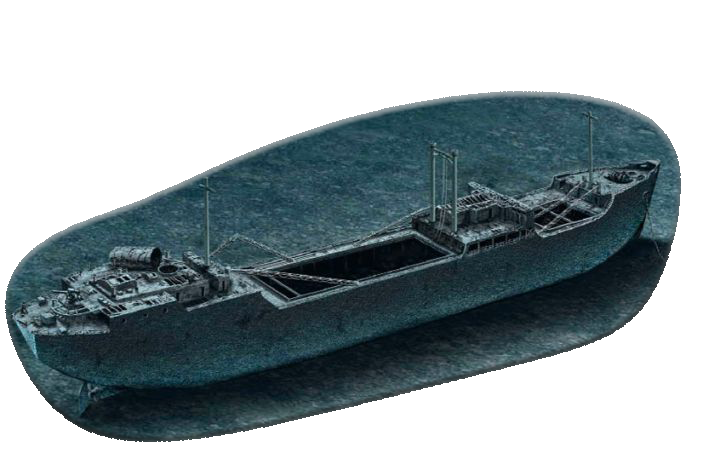
Chuyo Maru - Palau - Micronesia
Chuyo Maru is one of the many shipwrecks in the lagoons around Koror that resulted from Operation Desecrate One.
A ‘maru’ is a Japanese merchant ship. During the war, many merchant ships were converted for use in wartime and equipped with guns, depth charges, etc. in order to help defend themselves as they ferried cargo from Japan to these remote atolls.
Part of the US strategy in the Pacific in WW II was to move west across the different atolls and islands where Japan had established a foothold with airbases and operations. We didn’t want the enemy to attack us from the rear as we moved west to get close enough to send bombers to Japan.
The story & the dive
The data
General Information:
- Type: Cargo ship (converted)
- Length: 89 meters
- Beam: 12.4 meters
- Tonnage: 1,941 tons
- Speed: 10 knots
- Built: 1943 by Namura Zosenjo
- Owned by: Toyo Kisen Kaisha (Tokyo)
- Destroyed on March 30th, 1944.
- Current location: West Malakal Anchorage (A few hundred meters offshore of Ngargol Island)
- Depth: 40 meter
- Orientation (from stern to bow): Southeast
The history
After the US conducted the infamous Operation Hailstone at Chuuk on 17-18 February 1944, the next target was Palau.
The Japanese knew it was coming since it was the next obvious location west of Chuuk; however, they didn’t expect to happen as quickly after Chuuk. Just a short 6 weeks later, we conducted Operation Desecrate One on 30-31 March 1944.
During that battle, we sank or damaged thirty-six Japanese ships. The Japanese were able to get some of them out of the lagoons but we largely caught them by surprise.
The Chuyo Maru was bombed multiple times with 500-lb bombs Japanese dispatches reported that the ship sank at 8pm on April 1.
The Chuyo Maru was built as a coastal freighter of the Amakasu No. 1 or Goei Maru class.
The ship was completed for the private company Toyo Kisen Kaisha in 1943 and converted into an Army cargo ship soon after. The ship was reported
to be initially attacked shortly after 13:00 hour on March 30th by 500 lb. bombs by TBF Avengers torpedo-bombers.
The following day an air attack hit the ship on the port side amidship with a single 500 lb. bomb of a F6F Hellcat .
The ship was reported afterwards to have major fires aboard and then sank at 20:00 hrs. on April 1st.
Although the exact location of this wreck was recorded, the wreck was not considered worth salvaging after the war. She was forgotten until April 1989
when wreck hunters Francis Toribiong and Klaus Lindemann rediscovered her.
The ship’s identity was possible by the discovery of associated ceramics found aboard the wreck bearing the logo of the ship’s commercial owner Toyo Kisen Kaisha.
In May 2006 an English man illegally looted some artifacts from the Chuyo Maru and other shipwrecks in Palau and faced two months in jail and a fine of $ 40,000(USD)
The dive
The Chuyo Maru is known as the Lion Fish Wreck for the large number of lionfish that reside in and on the ship. The wreck is resting upright 40 meters of water, with the deck at 30 meters and the top of the forward tower at 12 meters.
Visibility can vary from 7 to 25 meters), but divers almost always find better visibility on the forward half of the wreck.
The Chuyo Maru has no marker buoy, so the dive guide will locate the wreck and use a lead weighted anchor to tie off the boat.
It had a coal burning steam engine that was located in the aft. The kingposts are readily identifiable and are forward of amidships. The superstructure is forward of the kingposts.
The Kingpost has a intricate bracing between the masts. The top of the kingpost is about 12 meter deep and is a home to a lot of sealife.
The dive usually begins at the bow section of the ship. The bow is raised above the main deck with a tall loading tower in the middle.
On top of the forecastle is a large double-headed anchor winch and coils of cable now encrusted with colorful corals.
On the port side of the deck, just prior to reaching the bridge, are two anchors.
In the early 1990s, a fishing boat unknowingly anchored above the Chuyo Maru, and while lifting their anchor, they snagged the Chuyo anchor.
The chain from the fishing boat broke trying to lift both anchors.
Both anchors can now be seen lying together on the deck.
Square trussed loading beams from the forward mast extend aft toward the forward hold, which is now empty.
Swim aft toward the bridge. The bridge structures were burned during the bombing and have since disintegrated, but remains of the brass compass and ship’s telegraph can still be seen.
Swimming past the bridge, you will approach the main cargo holds, which are also empty.
So, save your air and bottom time for further exploration.
The engine room
The engine room and boiler room are raised above the main boat deck, and preparation is needed to penetrate these areas.
A single door on the starboard side leads to a catwalk and stairs that connect the deck to the engine room entrance.
The engine room is relatively large but can turn into rusty-brown silt-filled water very quickly.
The engine room is one of the deeper areas of the wreck so be aware of decompression.
You will have a limited amount of time to explore, have a quick look at the quadruple-expansion steam engine and the skylights which is also one of the ways to enter the engine room on this wreck.
On this ship, there are two sets of skylights – one for engine room (three skylights) and one for the boiler room (two skylights).
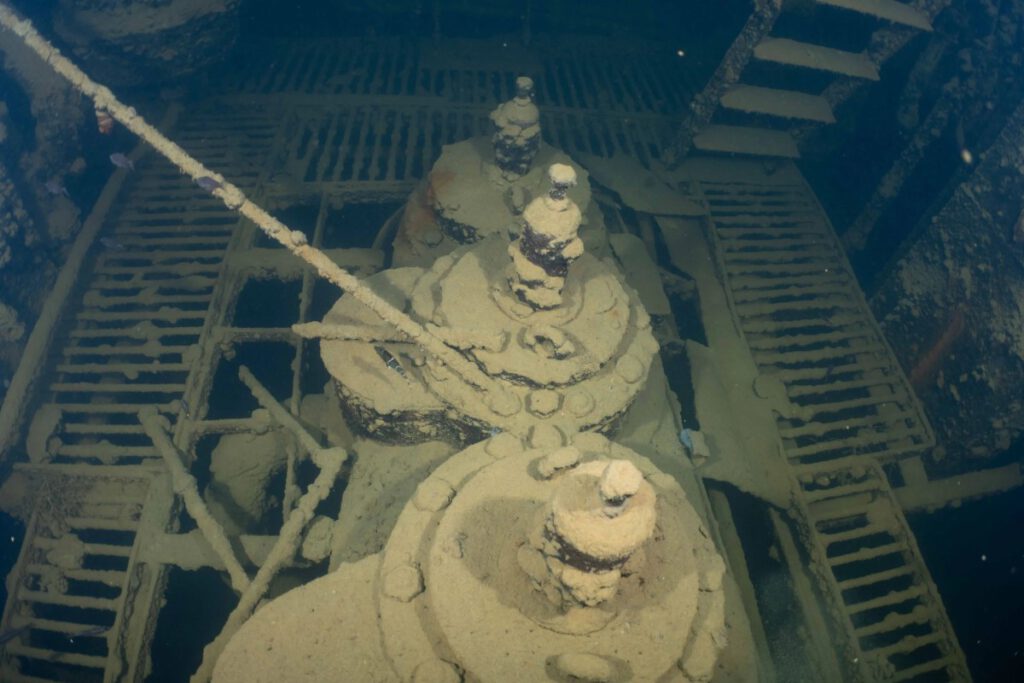
The engine
(Click to enlarge)
Further aft, toward the stern past the engine room skylights, are the stern gun, four ammunition boxes, and two depth charge launchers, both containing a depth charge.
The stern gun is a standard 1.86-ton gun with a short barrel and a maximum range of 5300 meters.
The gun is a 1.86-ton, 12 cm dual purpose “Short Gun”.
This type of gun was typically placed on ships of under 5,000 tons for anti-submarine and anti-aircraft use.
The following pictures were taken by Brett Eldridge during our joint dive on the Chuyo Maru in 2022
Flora & Fauna
There are no coral formations around the wreck, and the bottom is silt.
However, the entire bow section is covered with hard corals, black corals (Antipathes sp.), and spiral corals.
Look closely at these corals, and you may find a large number of translucent shrimps living on them.
Cock’s Comb oysters and soft corals cover the rails and deck. An area that is especially rich with lionfish is just past the cargo aft holds.
The usual abundance of colorful tropical fish can be found everywhere on the wreck, making it a vibrant and fascinating dive site.
Some pictures of the wreck
Important note:
It is essential to note that live ammunition can be found on this ship, as well as with all ship and plane wrecks in Palau waters. It is crucial not to pick up any ammunition, as due to the age of the bullets, bombs, and mortars, etc., these pieces of history are very unstable and can explode.
Penetration dives are not recommended unless the diver is experienced and skilled, and due to the age of the ship and the silting conditions, penetration into this wreck is considered dangerous.
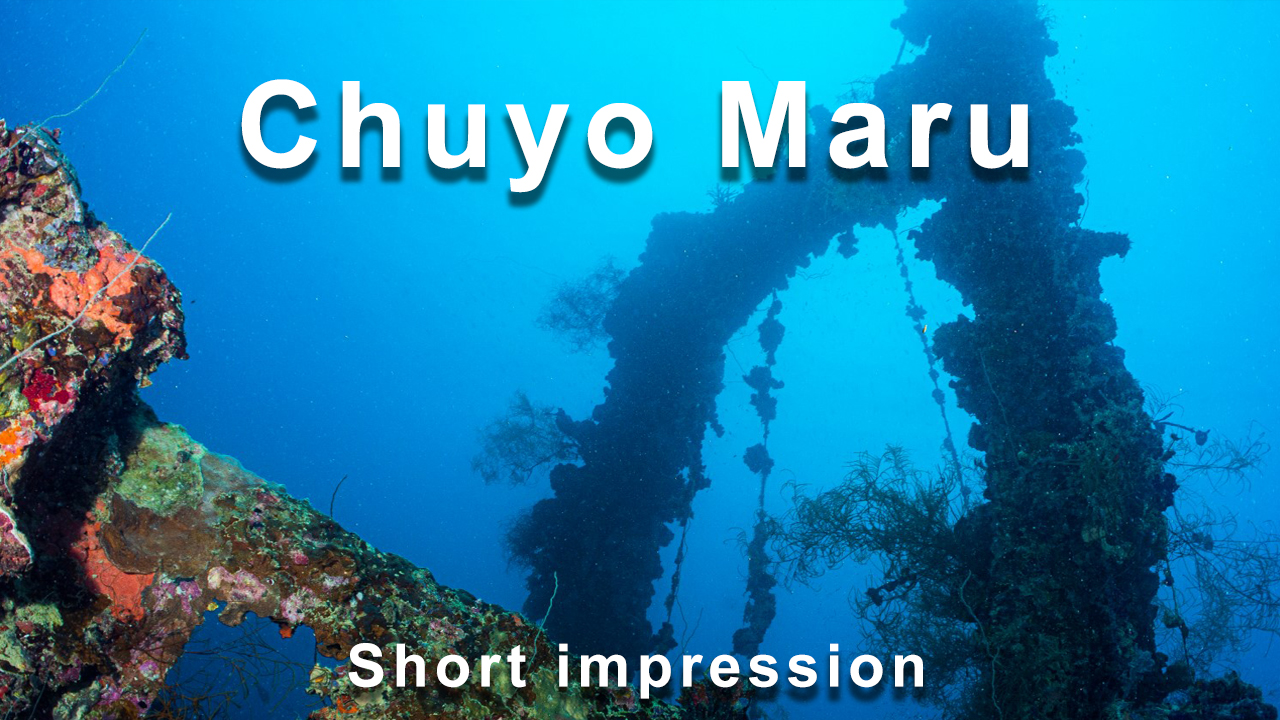
Short impression of the Chuyo Maru
(Click to play)
Conclusion
The Chuyo Maru is a fascinating dive site in Palau, offering advanced divers with deep and wreck diving experience the opportunity to explore a well-preserved historical shipwreck.
With lionfish and a variety of coral and marine life to discover, this dive is not one to be missed.
However, caution must be taken when exploring the ship, as live ammunition can be found and penetration dives are dangerous.


